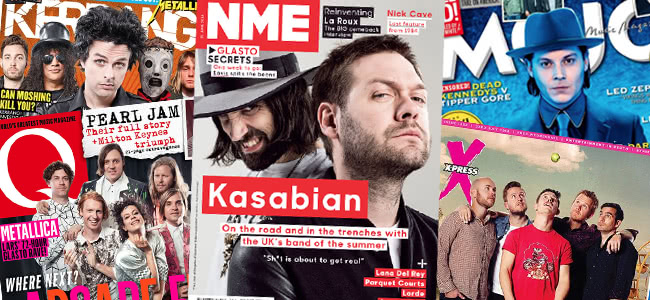Be honest, when was the last time you bought a music mag or picked up a street press?
It’s a pertinent question given the sales slump that some of the music world’s most prominent print publications are currently experiencing, while news arrives that another Aussie street press is winding back its operations.
Firstly, the latest figures from the long-running music presses in the UK are in, and they’re particularly ugly this year, with the legendary NME suffering another sharp drop in circulation that’s resulted in their lowest sales numbers ever.
Circulation of the 62-year-old title has fallen to fewer than 15,000 copies in the first half of 2014, as The Guardian reports. In the latest Audit Bureau of Circulations figures (published on Thursday 14th August), NME had an average weekly sales figure of 14,312, down an alarming 28.5% on the same period this time last year.
The downward trend has accelerated significantly since NME celebrated its 60th Anniversary in December 2012, when it was enjoying an average 23,049 copies a week, to 20,011 copies by the end of June, 2013. Even now, when combining print and digital sales, NME is reaching a circulation of 15,830 to the UK’s population of 63 million.
[include_post id=”334854″]
NME may be hit the hardest, but it’s not the only one, its IPC Media sister publication, Uncut, is also struggling. It experienced a drop of 12.1% to 50,022 average copies a week for 2014 (it was a 9.7% drop to 56,894 in 2013)
Love Music?
Get your daily dose of metal, rock, indie, pop, and everything else in between.
Titles like Q Magazine, Mojo, and hard rock bible Kerrang! – all from rival UK publisher, Bauer Media – didn’t fare much better. The monthly Q dropped to 46,096, down 21.8% year-on-year; Kerrang! is down 12.2% year-on-year to 33,024, and Mojo was down 10.9% year-on-year but was top of the music sales sector with circulation of 70,667.
Despite the UK music press’s bad tidings being an obvious sign of the times, Jo Smalley, publishing director of IPC’, is positive can bring a seachange of fortunes.
Despite the disastrous NME print figures, Smalley tells The Guardian that the title’s reach across all platforms is now 3.6 million, “bigger than it has ever been” in its print heyday, when it reached 300,000. She points towards increases in traffic to NME‘s mobile website, rising 85% year-on-year and accounting for 40% of its online readership.
Additionally, Britain’s The Fly – once the UK’s widest read print title – closed down after 15 years “as a result of current market conditions surrounding publishing.” Which is another way of saying that the majority of music consumers these days get their music fix online or by scrolling through their social media feeds rather than hitting the newsstands.
[include_post id=”395873″]
Closer to home, many Australian street press publications have been learning the same hard lessons (some slower than others), with the latest making the switch to a digital format being Perth street paper, X-Press.
The WA-based publication, founded 29 years ago, announced in a statement earlier this week that they’d be scaling back the weekly street press to a monthly edition as of 1st October as it launches a new digital app on 3rd September.
“Alive, anew and interactive. We were there for you then and we’re here (there and everywhere) for you now and the future,” writes X-Press managing editor Bob Gordon.

































